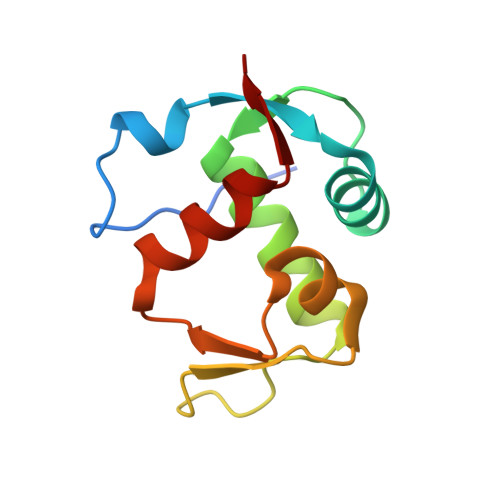Novel Inhibitors of the MDM2-p53 Interaction Featuring Hydrogen Bond Acceptors as Carboxylic Acid Isosteres.
Gonzalez, A.Z., Li, Z., Beck, H.P., Canon, J., Chen, A., Chow, D., Duquette, J., Eksterowicz, J., Fox, B.M., Fu, J., Huang, X., Houze, J., Jin, L., Li, Y., Ling, Y., Lo, M.C., Long, A.M., McGee, L.R., McIntosh, J., Oliner, J.D., Osgood, T., Rew, Y., Saiki, A.Y., Shaffer, P., Wortman, S., Yakowec, P., Yan, X., Ye, Q., Yu, D., Zhao, X., Zhou, J., Olson, S.H., Sun, D., Medina, J.C.(2014) J Med Chem 57: 2963-2988
- PubMed: 24601644
- DOI: https://doi.org/10.1021/jm401911v
- Primary Citation of Related Structures:
4OCC, 4ODE, 4ODF, 4OGN, 4OGT, 4OGV - PubMed Abstract:
We previously reported the discovery of potent and selective morpholinone and piperidinone inhibitors of the MDM2-p53 interaction. These inhibitors have in common a carboxylic acid moiety that engages in an electrostatic interaction with MDM2-His96. Our continued search for potent and diverse inhibitors led to the discovery of novel replacements for these acids uncovering new interactions with the MDM2 protein. In particular, using pyridine or thiazole as isosteres of the carboxylic acid moiety resulted in very potent analogues. From these, AM-6761 (4) emerged as a potent inhibitor with remarkable biochemical (HTRF IC50 = 0.1 nM) and cellular potency (SJSA-1 EdU IC50 = 16 nM), as well as favorable pharmacokinetic properties. Compound 4 also shows excellent antitumor activity in the SJSA-1 osteosarcoma xenograft model with an ED50 of 11 mg/kg. Optimization efforts toward the discovery of these inhibitors as well as the new interactions observed with the MDM2 protein are described herein.
Organizational Affiliation:
Departments of Therapeutic Discovery, ‡Pharmaceutics, and §Pharmacokinetics and Drug Metabolism, Amgen Inc. , 1120 Veterans Boulevard, South San Francisco, California 94080, United States.
















